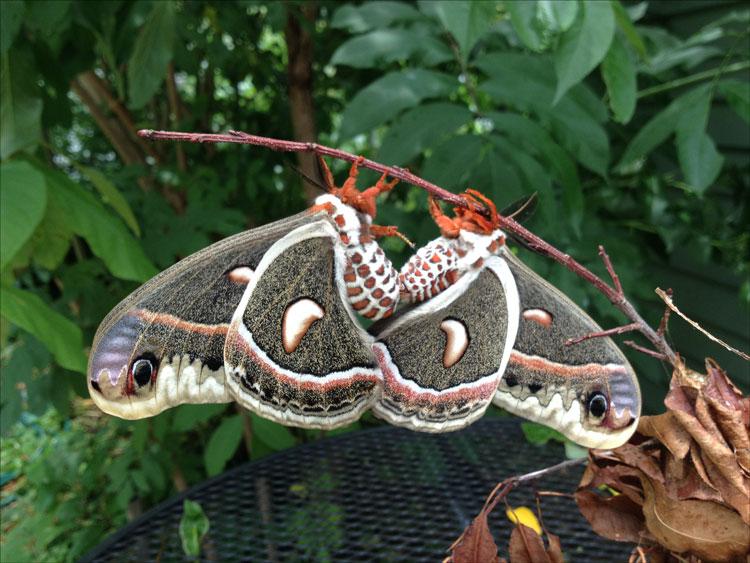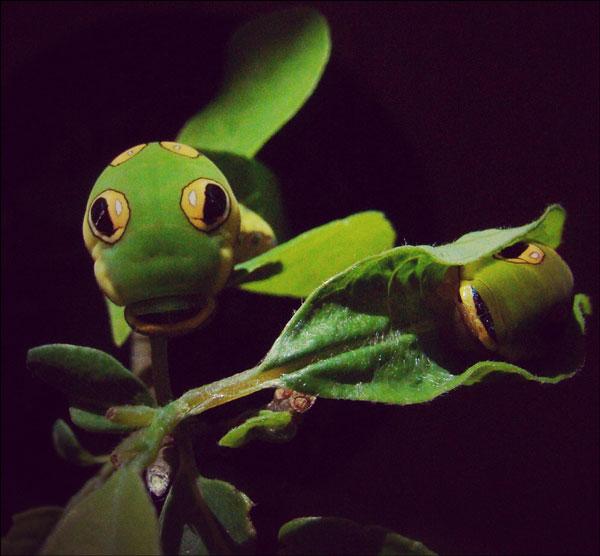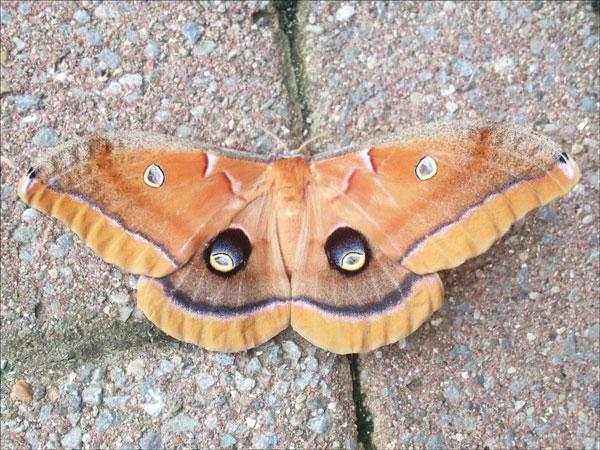Wildlife Connections: Moths and Butterflies
By Beverly James
Urban forests are a vital component of urban biodiversity, influencing the presence and abundance of many other species. An urban forest that includes a rich diversity of native trees and shrubs provides important food sources for the region’s birds, mammals, and invertebrates. Lepidoptera, the second largest insect order comprised of butterflies and moths, feed predominantly on native plants as caterpillars. Moving up the food chain, these caterpillars provide essential protein-rich meals for migratory and resident songbirds during spring and summer months.

Not all native trees and shrubs provide equally for butterflies and moths. Some genera, such as Prunus (cherries, plums), Salix (willows), and Betula (birches) support hundreds of species. Quercus - the mighty oaks - surpass them all by serving as a host plant for over 500 species of Lepidoptera. This includes dagger moths, underwings, hairstreaks, inchworms, and 15 species of giant silk moths, a well-liked family of moths due to their size and colorful patterns. Willows support familiar butterflies such as viceroys, red-spotted purples, mourning cloaks, and commas. Some native woody plants feed only a few species, such as spicebush, which supports 11 butterflies and moths. However, its importance is not diminished as it is one of only two food sources in Kentucky for the very selective spicebush swallowtail caterpillar.

Spicebush swallowtails and many other butterflies are considered specialists as caterpillars. This means they have very limited food or habitat requirements. In this case, the spicebush swallowtail larvae are restricted to plants in the Lauraceae family. By contrast, the giant silk moth caterpillars are considered generalists since they will feed on a number of different genera native to the region. In addition to the trees listed above, many giant silk moths are also supported by maples, hickories, sassafras, dogwoods, and sweetgum.
While many of the butterflies and moths listed above are not considered rare, they do become less encountered in urban areas due to the impacts of habitat loss and pesticide use. As development increases and non-native ornamental plants replace native plants, the availability of their food source declines. To attract butterflies and moths, as well as the birds and other animals that feed on them, it’s important to plant and protect the trees, shrubs, and wildflowers they rely on for food.

With their connections to native plants, birds, and bats, Lepidoptera are considered bioindicators for plant diversity and ecological health. June and July are excellent months to observe and learn about the diversity moths and butterflies. A fun backyard activity for observing nocturnal moths is to set up a white sheet next to a blacklight to see what shows up. You can even report your observations and photos to the Butterflies and Moths of North America website: http://www.butterfliesandmoths.org/. Sightings can be entered any time of year and you can just submit photos if you are unsure about identification. It’s one of many online tools for learning about and participating in citizen science.
Photography
- A female cecropia moth emerged from her cocoon in a Lexington backyard. A mate had arrived by the next day. (Laura Baird)
- Spicebush swallowtail caterpillars at Floracliff Nature Sanctuary in Fayette County. (Josie Miller)
- A polyphemus moth found at the UK Arboretum. (Laura Baird)
About the Author
Beverly James is the Preserve Manager of Floracliff Nature Sanctuary, a 287-acre forest and ecological area in the palisades region of the Kentucky River in southern Fayette County. Email @ bjames@floracliff.org
